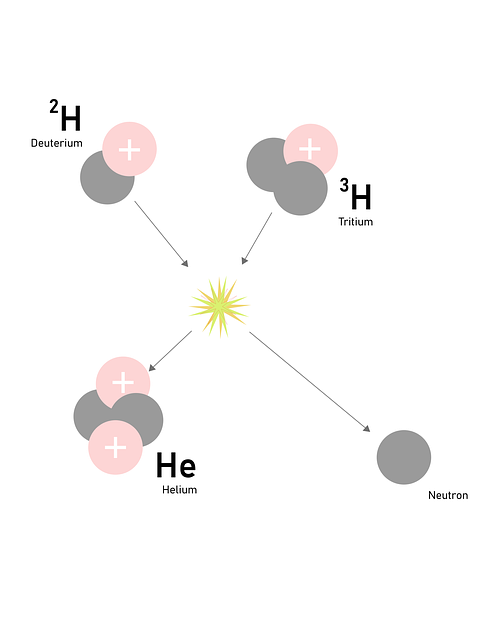Can Fusion Put Brakes on Climate Change
Firstly, in the face of the accelerating climate crisis, the search for sustainable, carbon-free energy sources has never been more urgent. Among the myriad of potential solutions, one stands out with a promise so vast it mirrors the power at the center of the sun: nuclear fusion. But the question on many minds is, can fusion put brakes on climate change? Thus, this article delves deep into the promise of fusion energy. Exploring its potential to revolutionize our approach to combating climate change. And why it could be the key to a sustainable future.
Understanding Fusion Energy
Before we tackle the monumental question of whether can fusion put brakes on climate change, it’s essential to understand what fusion energy is. Fusion reactions, the process that powers the sun, involve combining light atomic nuclei, like hydrogen atoms, to form heavier ones. Such as helium, releasing enormous amounts of energy in the process. Therefore this is achieved through devices that utilize strong magnetic fields or high-energy lasers to achieve the necessary conditions for fusion.
The Role of Magnetic Bottles and Superconductors
A significant advancement in the field of nuclear fusion has been the development of magnetic confinement devices. Often referred to as “magnetic bottles.” These devices use strong magnetic fields to contain the hot plasma for fusion reactions. The advent of high-temperature superconductors has further revolutionized this area, enabling much more effective magnets. Moreover, this breakthrough, spearheaded by projects like Commonwealth Fusion Systems, aims to make fusion energy more practical and closer to realization.
Fusion Energy: A Carbon-Free Way Forward
- Mitigating Climate Change: The pursuit of nuclear fusion is driven by its potential to provide a vast amount of clean energy. Unlike fossil fuels, fusion reactions do not produce carbon emissions, making them a carbon-free way of generating energy. This characteristic positions fusion energy as a crucial player in global decarbonization plans. Aiming to reduce the carbon footprint and mitigate the effects of climate change.
- The Potential of Fusion Energy: Imagine harnessing the power of the sun here on Earth. Providing a virtually limitless energy source. The fuel for a single glass of water, when used in fusion reactions, could provide as much energy as 300 gallons of gasoline. Therefore, this illustrates the immense potential of fusion energy as a clean, abundant source of power. Capable of meeting global energy demands while significantly reducing our reliance on fossil fuels.

Challenges and Advances in Fusion Energy
While the promise of fusion energy is undeniably captivating, the path to its commercialization is fraught with challenges. Fusion’s elusiveness has often been likened to the pursuit of the White Queen’s philosophy in Lewis Carroll’s tales – always just out of reach. Yet, the field has seen major advances in recent years, thanks to technological advances and increased investment.
- Major Advances in Fusion Technology: From the experimental fusion device in Southern France, known as the International Thermonuclear Experimental Reactor (ITER), to the cutting-edge research at the Lawrence Livermore National Laboratory in the United States, the pursuit of nuclear fusion has made significant strides. ITER, for example, aims to demonstrate the feasibility of fusion as a large-scale and carbon-free source of energy.
This segment of our exploration into whether fusion can put brakes on climate change has introduced the concept, its potential for climate action, and the challenges ahead. However, understanding the intricacies of fusion energy and its role in our future requires a deeper dive into its scientific foundations, environmental implications, and ongoing efforts to make this clean-energy dream a reality.
The Environmental Imperative for Fusion Energy
As the world grapples with the escalating crisis of climate change. The imperative for clean, sustainable energy sources has never been clearer. Hence, fusion energy stands at the forefront of this challenge, offering a beacon of hope. But can fusion truly put brakes on climate change? The environmental benefits suggest a resounding potential.
- A Leap Toward Decarbonization: Fusion energy represents a cornerstone in the global effort to transition away from carbon-intensive fossil fuels. By providing a plentiful source of clean energy, fusion has the potential to significantly reduce greenhouse gas emissions. A critical step in combating the accelerating climate crisis. Unlike conventional nuclear power, which relies on fission and has well-known disadvantages. Including radioactive waste, fusion offers a cleaner alternative, producing minimal radioactive byproducts.
- Sustainable and Abundant Fuel Sources: One of the most compelling aspects of fusion energy is its use of readily available fuels. Such as Deuterium, a heavy hydrogen isotope, can be extracted from seawater. While tritium, another hydrogen isotope required for certain fusion reactions, can be bred from lithium. As a result this abundance ensures that fusion energy can meet the world’s energy demands. Without the scarcity issues that plague other resources, positioning it as a sustainable solution for the future.

The Scientific and Technological Journey of Fusion
The road to realizing fusion energy as a viable power source is paved with scientific and technological milestones. Thus the progress in this field reflects the collective endeavor of international collaborations and the relentless pursuit of innovation.
- From Concept to Reality: The concept of harnessing fusion energy has evolved significantly since British physicist Arthur Eddington first proposed the idea nearly a century ago. So today, experimental fusion devices like the Joint European Torus (JET) and ITER are testing the limits of what’s possible. Using powerful magnetic fields to contain and control the hot plasma necessary for fusion reactions.
- Technological Breakthroughs: The development of high-temperature superconductors has been a game-changer for fusion research. Moreover, these materials allow for much stronger and more efficient magnetic fields, essential for stabilizing the plasma in fusion reactors. Therefore, this advancement has propelled the field forward, bringing the dream of a fusion-powered future closer to reality.
The Economic and Societal Impact of Fusion Energy
Beyond its environmental benefits, fusion energy promises to reshape economies and societies. Furthermore, the transition to fusion power could foster new industries, create jobs, and drive technological innovation across sectors.
- Energy Independence and Security: Fusion energy could dramatically reduce global dependence on fossil fuels, enhancing energy security and stability. Furthermore, Countries currently reliant on energy imports would gain access to a virtually inexhaustible power source. Shifting the dynamics of global energy politics and potentially reducing conflicts over resources.
- Driving Economic Growth: The fusion industry could become a significant economic force. Providing high-skilled jobs and fostering a vibrant ecosystem of research and development. From the construction of fusion plants to the development of supporting technologies. The economic ripple effects of fusion energy could be profound.
Fusion Energy: Addressing the Challenges Ahead
While the promise of fusion energy is tantalizing, significant challenges remain. Achieving the conditions necessary for sustained fusion reactions requires immense technological innovation and investment. The complexity of designing and building reactors that can safely and efficiently harness fusion power cannot be understated. Moreover, the transition from experimental to commercial fusion energy will require substantial financial investment, international collaboration, and supportive policy frameworks.
- Overcoming Technical Hurdles: The primary challenge in fusion energy is achieving a net energy gain. Where the energy produced by fusion reactions exceeds the energy input required to initiate and maintain those reactions. This requires precise control over the fusion process. And the development of materials capable of withstanding the extreme conditions inside a fusion reactor.
- The Need for Global Collaboration: The pursuit of nuclear fusion is a global endeavor, necessitating partnerships across borders. Projects like ITER demonstrate the potential of international collaboration, bringing together expertise and resources from around the world. Such cooperation will be crucial in overcoming the technical, financial, and regulatory challenges facing fusion energy.
The journey of fusion energy from an elusive dream to a potential cornerstone of our energy future is fraught with challenges but filled with promise. As we continue to explore the potential of fusion to put brakes on climate change, it’s clear that the path forward requires not just scientific innovation but a collective commitment to a more sustainable and secure energy future.
Navigating the Fusion Energy Landscape: Policy and Public Perception

The transition to fusion energy is not solely a scientific or technological endeavor. But also a matter of policy and public perception. The journey toward integrating fusion into our energy mix involves navigating regulatory landscapes, securing funding, and fostering public support. But, can fusion energy indeed put brakes on climate change under these societal dimensions?
- Policy Frameworks for Fusion Energy: Effective policy frameworks are crucial for supporting fusion energy development. Governments and international bodies must create environments that encourage innovation and investment in fusion technology. This includes funding research and development, streamlining regulatory processes, and setting long-term energy policies that prioritize sustainable, clean sources. The UK Government’s fusion strategy and the U.S. energy research initiatives exemplify how policy can accelerate fusion energy development.
- Fostering Public Support and Awareness: Public perception of nuclear energy is complex. Shaped by concerns over safety, waste, and the legacy of nuclear weapons and accidents. Fusion energy, despite its distinct advantages over traditional nuclear fission, is not immune to these perceptions. Educating the public on the safety, environmental benefits, and transformative potential of fusion energy is vital for garnering support. Highlighting fusion’s role in combating climate change and providing a clean, abundant energy source can shift perceptions. And build a broad base of support.
The Fusion Energy Ecosystem: Collaboration and Investment
The development of fusion energy is buoyed by an ecosystem of collaboration and investment that spans academia, government, and the private sector. This multifaceted approach is essential for overcoming the technical and financial challenges that lie on the path to commercial fusion power.
- The Role of Academic and Research Institutions: Academic institutions and research laboratories are at the forefront of fusion energy research. Pushing the boundaries of what’s possible. Institutions like the Princeton Plasma Physics Laboratory and the Lawrence Livermore National Laboratory in the United States, along with the Joint European Torus in the UK, are leading the way in fusion research. These institutions not only advance the science behind fusion but also train the next generation of fusion scientists and engineers.
- Private Sector Innovation: An increasing number of startup companies, such as Commonwealth Fusion Systems, are entering the fusion energy space. Driven by the potential for profound economic and societal impacts. These companies are pioneering new technologies. Such as advanced superconducting magnets, that could lower the barriers to achieving commercial fusion energy. The private sector’s agility and innovation, coupled with significant investment, are accelerating the pace of progress in fusion technology.
- International Collaboration: Fusion energy is a global challenge that requires global solutions. Projects like ITER are a testament to the power of international collaboration. Bringing together countries and resources in a shared pursuit of a common goal. Such collaborations facilitate the sharing of knowledge, minimize duplication of effort, and spread the financial burden of large-scale fusion projects.
The Future of Fusion Energy: Prospects and Potential
As we explore the question of whether fusion can put brakes on climate change, it’s essential to consider the broader implications of this revolutionary energy source. The potential of fusion energy extends beyond merely providing clean power; it represents a fundamental shift in how humanity powers its civilization.
- A Vision for a Sustainable Future: Fusion Energy offers a vision of a future. Where energy is abundant, clean, and accessible to all. This vision aligns with global sustainability goals, providing a pathway to reduce greenhouse gas emissions drastically. And limit the impacts of climate change. The transition to fusion energy could also spur innovations in other sectors. From transportation to industry, further amplifying its environmental and societal benefits.
- Preparing for a Fusion-Powered World: While the commercialization of fusion energy is still on the horizon. Preparing for its integration into the global energy system is critical. This preparation involves developing infrastructure, regulatory frameworks, and market mechanisms accommodating fusion power. It also requires addressing the social and economic implications of a shift to a new energy paradigm. Ensuring that the benefits of fusion energy are equitably distributed.
The question of whether fusion can put brakes on climate change is multifaceted. Touching on scientific, technological, environmental, economic, and societal factors. The journey towards realizing fusion energy as a key player in our climate mitigation efforts is complex and challenging. However, the potential rewards—clean, abundant, and sustainable energy—are unparalleled. As we stand on the cusp of a fusion-powered future, the collective efforts of researchers, policymakers, and society at large will determine the role fusion energy will play in shaping our world.
The Fusion Imperative: Overcoming Technological Barriers
As the global community intensifies its quest to combat climate change, the technological barriers to achieving practical fusion energy emerge as pivotal challenges to be surmounted. The heart of the fusion quest lies in achieving and maintaining the extreme conditions necessary for fusion to occur—conditions that replicate the heart of stars. This segment explores cutting-edge technological innovations and the relentless pursuit of solutions that could bring the fusion dream into reality.
- Achieving Sustained Fusion Reactions: Central to making fusion energy viable is the challenge of achieving a sustained fusion reaction that produces more energy than it consumes. This has been an elusive goal. But recent advances in magnetic confinement fusion, particularly through the use of high-temperature superconductors, offer promising pathways. These superconductors enable the creation of stronger and more efficient magnetic fields. Crucial for containing and stabilizing the high-energy plasma in which fusion occurs.
- Material Science Breakthroughs: The extreme conditions inside a fusion reactor present significant material science challenges. Components must withstand intense heat and radiation without degrading. Research into novel materials and advanced engineering solutions is critical for developing reactor parts that can endure these conditions over long operational lifetimes. Breakthroughs in this area could significantly reduce maintenance needs and increase the feasibility of fusion power plants.
- Fusion Fuel Cycle Innovations: The fusion fuel cycle, particularly for reactors using deuterium-tritium fuel, requires a self-sustaining supply of tritium. Developing efficient methods for breeding tritium within the reactor environment and recycling it effectively is a key challenge. Advances in fuel cycle technology will play a critical role in ensuring the sustainability and environmental friendliness of fusion energy.
The Economic Viability of Fusion Energy
Beyond the technological hurdles, the economic viability of fusion energy is a crucial consideration. Fusion must not only be technically achievable but also economically competitive with other forms of energy. This necessitates innovations in cost reduction and efficiency improvement.
- Lowering Costs Through Innovation: The initial cost of fusion energy development and reactor construction is high. Driven by the complexity of fusion technology and the need for advanced materials and components. However, economies of scale and technological advancements, similar to what has been seen in solar and wind power, could significantly reduce costs. Investment in research and development, coupled with public and private sector funding, is essential for driving down these costs.
- The Potential for Economic Disruption: Fusion Energy has the potential to disrupt the global energy market. By providing a virtually limitless, low-cost source of power. Of course this could lead to lower energy prices, increased energy security, and significant economic benefits. Especially for countries that rely heavily on energy imports. Indeed the impact on industries, from manufacturing to transportation, could be profound, catalyzing a new era of economic growth and innovation.
The Road Ahead: Ethical Considerations and Global Impact

The advancement of fusion energy raises not only technical and economic considerations but also ethical and global implications. As we stand on the brink of potentially unlocking this immense power source, reflection on its broader impacts is imperative.
- Ensuring Equitable Access: As fusion energy develops, it is crucial to ensure equitable access to its benefits. Without doubt this means addressing disparities between nations and within societies to prevent a scenario where fusion exacerbates existing inequalities. International frameworks and cooperation will be vital in sharing the fruits of fusion technology globally.
- Addressing Environmental and Safety Concerns: While fusion offers a cleaner alternative to fossil fuels, with minimal radioactive waste and no greenhouse gas emissions. Ensuring the environmental and safety aspects of fusion technology is paramount. Rigorous safety standards, effective waste management protocols. And continuous monitoring will be essential to maintain public trust and safeguard the environment.
- Fusion Energy and Climate Change Mitigation: The ultimate test of fusion energy’s impact will be its role in mitigating climate change. By providing a clean, abundant source of energy, fusion has the potential to significantly reduce the world’s reliance on fossil fuels. Thereby lowering greenhouse gas emissions. Also this aligns with global efforts to combat climate change. And underscores the importance of continued investment and research in fusion technology.
The question of can fusion put brakes on climate change
The question of can fusion put brakes on climate change is complex, encompassing technological, economic, ethical, and environmental dimensions. The path to fusion energy is fraught with challenges but also rich with potential. Indeed, as the world grapples with the urgent need for sustainable energy solutions, the pursuit of fusion energy remains a beacon of hope. In fact, a testament to human ingenuity and perseverance in the face of the planet’s greatest challenge. The collaborative efforts of the global community, from scientists to policymakers, will determine the role fusion energy will play in our sustainable future.
Empowering the Future: Fusion Energy and Sustainable Development
As we contemplate the monumental shift towards fusion energy, its implications extend far beyond the realm of electricity generation. In fact, the advent of fusion energy promises to catalyze sustainable development across numerous sectors. Empowering a future where clean energy is not just a goal, but a reality. This concluding segment explores the holistic impact of fusion energy on sustainable development, societal growth, and the global effort to combat climate change.
- Revolutionizing Global Energy Infrastructure: Firstly, The integration of fusion energy into the global energy mix necessitates a transformation of existing energy infrastructure. Of course this transformation will involve the development of new grids. Capable of handling the output of fusion plants, along with storage technologies to ensure energy reliability. By providing a stable, abundant source of power, fusion energy could significantly reduce the world’s dependence on energy grids powered by fossil fuels. Thus, paving the way for a more resilient and sustainable energy infrastructure.
- Accelerating Decarbonization Efforts: The urgency of the climate crisis calls for rapid and decisive action to reduce greenhouse gas emissions. So fusion energy, with its potential to provide a significant portion of the world’s energy needs without carbon emissions, stands as a cornerstone technology in global decarbonization efforts. In fact, its deployment could accelerate the transition to a low-carbon economy. Supporting the objectives of international climate agreements. And helping to mitigate the impacts of climate change on vulnerable communities and ecosystems.
Can Fusion Put Brakes on Climate Change
- Fostering Innovation and Economic Growth: The pursuit of fusion energy is driving innovation in fields ranging from material science to advanced computing. This innovation ecosystem not only propels the development of fusion technology but also stimulates economic growth. Creating high-tech jobs and opening new markets. As fusion technology matures, its influence could extend into sectors such as transportation, manufacturing, and beyond. Fostering a new wave of economic development centered on clean energy.
- Enhancing Global Collaboration and Peace: The collaborative nature of fusion research, exemplified by international projects like ITER, highlights the potential of fusion energy to bring nations together in pursuit of a common goal. This spirit of cooperation could serve as a model for addressing other global challenges, from climate change to poverty reduction. By sharing the benefits of fusion energy and ensuring equitable access, the international community can strengthen global ties and promote peace and stability.
- The Ethical Imperative of Fusion Energy Research: As we advance on the path to realizing fusion energy, it is essential to navigate the ethical considerations associated with this transformative technology. This includes ensuring that the development and deployment of fusion energy are conducted in ways that prioritize environmental protection, social equity, and the well-being of future generations. Engaging with diverse stakeholders, from local communities to global organizations, will be crucial in shaping the ethical framework surrounding fusion energy.
Conclusion: Lighting the Way Forward with Fusion Energy
The journey to harness fusion energy is a testament to humanity’s relentless pursuit of knowledge. And its unwavering commitment to a sustainable future. While significant challenges lie ahead, the potential of fusion energy to put brakes on climate change and transform our energy landscape is undeniable. By offering a clean, inexhaustible source of power, fusion energy stands as a beacon of hope in our collective effort to combat climate change, reduce global inequalities, and foster a sustainable and prosperous future for all.
In answering the question, “Can fusion put brakes on climate change?” it becomes clear that fusion energy not only has the potential to significantly contribute to climate change mitigation but also to redefine our approach to energy, environmental stewardship, and global cooperation. The path forward requires a sustained commitment to research, innovation, and collaboration across borders and disciplines. As we look to the horizon, the promise of fusion energy illuminates the way forward. Offering a brighter, cleaner future for our planet and generations to come.
Can Fusion Put Brakes on Climate Change 5 Frequently Asked Questions (FAQs)

What is Fusion Energy and How Does It Differ from Traditional Nuclear Power?
Fusion energy involves merging light atomic nuclei to form heavier nuclei, releasing energy in the process. Unlike conventional nuclear power, which relies on the fission (splitting) of heavy atoms like uranium, fusion produces minimal radioactive waste. And has the potential for a virtually limitless fuel supply from substances like seawater.
Can Fusion Energy Truly Help Combat Climate Change?
Yes, fusion energy has the potential to significantly mitigate climate change. By providing a massive, clean source of power without carbon emissions, it can replace fossil fuels and reduce the greenhouse gases responsible for global warming. However, achieving commercial-scale fusion energy requires overcoming significant technological and economic challenges.
What Are Magnetic Bottles, and Why Are They Important for Fusion Energy?
Magnetic bottles are devices that use strong magnetic fields to confine hot plasma—a state of matter required for fusion reactions. They are crucial for sustaining the extremely high temperatures and pressure conditions necessary for fusion to occur. Making them a fundamental component of magnetic confinement fusion reactors like tokamaks and stellarators.
How Far Are We from Realizing Commercial Fusion Power Plants?
While there have been significant advances in fusion research, including the development of high-temperature superconductors and the construction of experimental reactors like ITER, commercial fusion power remains a long-term goal. Most experts agree that several technological, financial, and regulatory hurdles remain. Making it difficult to predict exactly when fusion power will be widely available.
What Role Does International Collaboration Play in Fusion Energy Development?
Fusion energy development benefits greatly from international collaboration due to its complex, expensive nature. Projects like ITER involve multiple countries pooling resources, knowledge, and expertise to advance fusion science. Such collaboration not only accelerates research but also ensures that the potential benefits of fusion energy can be shared globally.
Can Fusion Put Brakes on Climate Change, A List of 49 Facts
- Magnetic bottle: A device used in fusion reactors to confine hot plasma with magnetic fields, crucial for sustaining fusion reactions.
- Carbon capture: A technology designed to trap carbon dioxide emissions from sources. Like gas power plants and prevent them from entering the atmosphere, contributing to climate change mitigation efforts.
- Intergovernmental Panel: The Intergovernmental Panel on Climate Change (IPCC) provides scientific assessments on climate change, its implications, and potential future risks. As well as presenting strategies for mitigation and adaptation.
- Solar energy: A renewable energy source obtained by harnessing the power of the sun’s rays. Offering a sustainable alternative to fossil fuels.
- Fuel of a single glass of water: In nuclear fusion, the amount of energy that can be produced from the hydrogen in a single glass of water is equivalent to the energy content of hundreds of gallons of gasoline.
- Reasonable description: A term used to convey a clear, concise, and accurate explanation or depiction of a concept or object.
- Gas power plants: Facilities that generate electricity by burning natural gas, releasing carbon dioxide, a greenhouse gas, into the atmosphere.
- Graduate student: An individual who has completed a bachelor’s degree. And is pursuing further education at a master’s or doctoral level, often involved in advanced research.
- Lot of energy: A phrase describing a substantial amount of power or electricity. Often used in the context of energy production or consumption.
- High-temperature superconductor: Materials that can conduct electricity without resistance at relatively high temperatures. Critical for developing more efficient magnetic confinement systems in fusion reactors.

Can Fusion Put Brakes on Climate Change?
- Nuclear-fusion energy: Energy produced by the fusion of two light atomic nuclei into a heavier nucleus. Releasing a significant amount of energy, and offering a potential source of clean, limitless power.
- Much more effective magnet: Refers to the advancements in magnet technology. Such as those used in magnetic confinement fusion, which are crucial for improving the efficiency and feasibility of fusion reactors.
- Little bit of mass: In the context of fusion, a small amount of mass is converted into a large amount of energy. As described by Einstein’s mass-energy equivalence principle (E=mc²).
- Orange County: A region that could be mentioned in various contexts, including its environmental initiatives, technological developments, or educational institutions.
- Much money: Refers to the significant investment required for research and development in fields like nuclear fusion. Highlighting the financial challenges and the potential for substantial economic benefits.
- Unusual take: An innovative or unconventional perspective on a topic. Often leading to unique solutions or new understandings in scientific research and development.
- Pure energy: A term often used to describe the high-energy output from processes like nuclear fusion, which can be converted into electricity without producing greenhouse gas emissions.
- Fusion bomb: A weapon that derives its destructive force from the release of energy through the fusion of light nuclei, distinct from the fission process used in atomic bombs.
- U.S. energy research: Encompasses a wide range of initiatives aimed at developing sustainable energy sources, improving energy efficiency, and advancing technologies like nuclear fusion.
- Form helium: In nuclear fusion, two hydrogen isotopes combine to form a helium nucleus, a process that releases a significant amount of energy.
Can Fusion Put Brakes on Climate Change?
- Scientific American: A popular science magazine that covers developments in research and technology, including topics on nuclear fusion and renewable energy sources.
- Maximum amount: Refers to the highest possible output or capacity, such as the maximum amount of power that can be generated by a fusion reactor.
- British physicist Steven Cowley: A prominent figure in the field of nuclear fusion, known for his contributions to fusion research and his role in advancing the understanding of plasma physics.
- Atomic bombs: Weapons that release energy through the nuclear fission of heavy atomic nuclei, leading to massive destruction and radioactive fallout.
- Atomic weapons: Encompass both fission bombs and fusion (hydrogen) bombs, representing a significant part of military arsenals and global security concerns.
- Next Fukushima: A phrase that evokes concerns about the safety of nuclear energy, referencing the 2011 nuclear disaster in Fukushima, Japan.
- Green New Deal: A proposed package of United States legislation that aims to address climate change and economic inequality, potentially including support for renewable energy sources like solar and fusion energy.
- Giant metal doughnuts: A colloquial description of toroidal (doughnut-shaped) fusion reactors, such as those used in tokamak devices, which confine plasma using magnetic fields.
- Paul Dabbar: An individual whose context could relate to energy policy, scientific research, or government administration, particularly in areas concerning nuclear energy or fusion research.
- Edward Teller: A physicist known as the “father of the hydrogen bomb” for his work on the development of fusion weapons and his contributions to fusion energy research.
Can Fusion Put Brakes on Climate Change?
- Scarcities of funding: Challenges faced by research fields, including fusion energy, where limited financial resources can hinder progress and innovation.
- Amount of power: A measure of the energy output or consumption, often used in discussions about the efficiency and capacity of energy generation systems, including fusion reactors.
- Pipe dream: A term used to describe a goal that is unattainable or fanciful, often applied skeptically to ambitious projects like commercial nuclear fusion.
- Last year: A reference to recent events or developments, which in the context of this list could relate to breakthroughs, policy changes, or milestones in fusion energy research.
- Fusion science superpower: A nation or entity that leads in the development and application of fusion technology, contributing significantly to advancements in the field.
- Had pink slips: A phrase indicating job losses or layoffs, potentially relevant in discussions about the economic impacts of energy transitions or research funding cuts.
- Prototype fusion power plant: An early model of a fusion reactor designed for testing the feasibility and efficiency of generating electricity from fusion energy on a commercial scale.
- Entire adult life: A phrase indicating a long-term commitment or career, often used by researchers or professionals who dedicate their careers to challenging fields like fusion energy.
- New Yorker article: Refers to publications in The New Yorker magazine, which might cover a wide range of topics, including science, technology, and the impact of fusion energy research.
- Dennis Whyte: A researcher or scientist associated with nuclear fusion, potentially noted for contributions to the development of fusion technology or the advancement of fusion energy research.
Can Fusion Put Brakes on Climate Change?
- U.K. government: Has shown interest in advancing nuclear fusion technology, including investments in fusion research and development as part of its energy strategy.
- Work of Steven Jones: Could refer to scientific research or contributions in a specific field, including aspects related to nuclear fusion or renewable energy technologies.
- Artificial intelligence: AI technologies are increasingly being applied to optimize fusion energy research, from plasma control to predictive maintenance of fusion reactors.
- Fusion industry superpower: Refers to a leading position in the global fusion industry, marked by significant advancements, investments, and contributions to fusion energy development.
- Slightly ambitious plan: Often describes a project or goal that is challenging but achievable, reflective of the optimism and determination driving fusion energy research.
- Goal of the United Kingdom: To become a leader in fusion energy, as evidenced by significant investments in fusion research and development projects.
- Physicists Bob Mumgaard: One of the figures involved in fusion energy research, potentially contributing to breakthroughs or developments in the field.
- Inertial confinement fusion: A method of achieving nuclear fusion by using lasers or ion beams to compress and heat a fuel pellet to the conditions necessary for fusion to occur.
- Superconducting magnet: A critical component in magnetic confinement fusion reactors, enabling the creation of the strong magnetic fields needed to contain and control the fusion plasma.
Please share this Article “Can Fusion Put Brakes on Climate Change?“ with your friends on Social Media so that others may find it. Thank you.
Recent Posts
Understanding Energy and Electricity: The Power For Progress
Energy and Electricity Energy and electricity are integral components of modern life, powering everything from homes and businesses to transportation and communication. Without them, the...
The Future of Wind Energy The future of wind energy is set to play a critical role in addressing global energy needs while combating climate change. As renewable energy sources like wind and...


